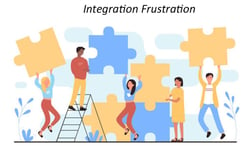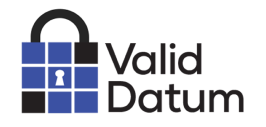What You Don’t Know About the Cloud Might Hurt You!
Nearly every ERP vendor, be it SAP, Oracle, Epicor, Infor, Microsoft Dynamics, and the list goes on, has been pushing legacy customers toward their cloud offering for years. Some, like the infamous SAP S/4HANA 2025 (now 2027) deadline, have been threatening end-of-life legacy support. If you are finding yourself moving to a new cloud ERP environment, whether by choice, vendor pressure, or any other reason, understand that the journey may not be quite as easy to navigate as your ERP sales rep is telling you.
With any cloud ERP solution, there are often multiple variations, infrastructure, and deployment options, as well as single vs. multi-tenant options. For this post, we are assuming multi-tenant cloud software, also referred to as Software-as-a-Service (SaaS). Consider the following as you begin your migration:
 The Cloud Difference
The Cloud Difference
The first consideration is that you are now a web client. While the cloud brings many positive changes such as security and support enhancements, mobility and access flexibility, and real-time analytics, there are changes that may not seem quite as positive.
These can include time lag while logging in or refreshing your browser, dependency on the Internet connection, and multiple steps for logging in due to enhanced security.
Base functionality for many systems may appear similar for end users with a degree of updated UI, but the back end and data structure will be a vast change from your legacy environment.
Lack of Customization
In a legacy ERP environment, you had the ability to customize modules as needed for your organization. Under a multi-tenant structure, however, you lose this option as you are sharing standard functionality with other companies. Most ERP vendors have taken great strides in accommodating this change, including modifications such as:
-
Loading a plethora of functional configurations within the software. By loading multiple options to choose from, vendors are hoping to reduce the need for true customization.
-
Creating “best-practice” models by
 industry and business type. This is more common for the larger platforms, where your integrator will try to fit you to the best model and force your business into the software, rather than the traditional route of fitting the software to your direct needs.
industry and business type. This is more common for the larger platforms, where your integrator will try to fit you to the best model and force your business into the software, rather than the traditional route of fitting the software to your direct needs. -
Offer a tremendous array of third-party integrations to manage and replace previous customized functionality.
Despite these efforts, under a multi-tenant environment, you will ultimately face increased, and difficult APIs and integrations to meet your differentiating requirements. This is especially true if you are moving off a customized platform.
As your historic customizations will no longer be available, you will be required to meet unique business needs through integrating disparate software as the off-the-shelf cloud platform does not offer your previous custom requirements.
Reporting:
Any ERP system will offer a variety of reporting options and capabilities. One of the benefits of the legacy environments for many ERP clients was the ability to have all data in-house and create custom reports, as mentioned above. The difficulty in the SaaS environment is that the data structures are significantly different than before.
Data cannot simply be lifted into the new system as it sits in different fields with different naming conventions and moves with changing business processes. It will be rendered at different points in time and will likely be more difficult to access under the shared structure. In order to meet reporting needs, increased demands are now put on the integration team, as each entry needs to be reviewed and reconnected with the new data structure.
Be sure to plan for this elevated effort as you map out your transformation plan.
Moving to a multi-tenant solution may be the right move for your company. The ERP vendor community has invested the last decade-plus in developing new cloud platforms and they do come with advantages and access to emerging technologies and big data. Before jumping aboard, however, be sure to take an accurate assessment of how your business will adapt to the new model.
If you have questions on the topics included here or would like to discuss more on how you can best prepare for an ERP migration, please reach out. We also welcome you to subscribe to our blog and receive current posts on data management, security, and technology transformation best practices.
#Cloud #DigitalTransformation #ERP
Recent posts

30 Jan, 2024


